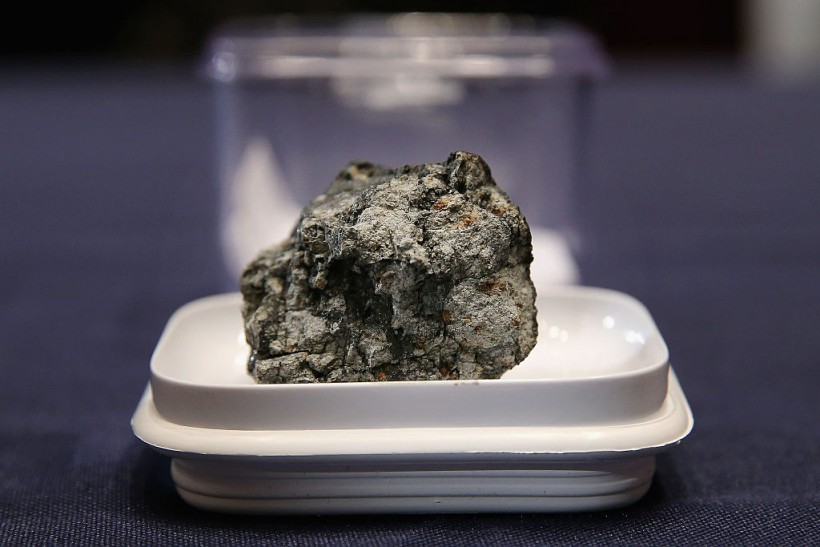Finding meteorites in the pristine landscape of Antarctica could be easier than most places but "physically hazardous" due to its environment. But researchers thought, "what if you know where to look?"
Researchers from Delft University of Technology in The Netherlands created a type of 'treasure map' which will likely predict hiding places of 300,000 meteorites across antarctica, ScienceAlert reports. The first-ever 'treasure map' was created using artificial intelligence with combination of different types of observations in a machine learning algorithm.
"Through our analyses, we learned that satellite observations of temperature, ice flow rate, surface cover and geometry are good predictors of the location of meteorite-rich areas," Veronica Tollenaar, who led the strudy as a master's student at TU Delft and a doctoral student at Université libre de Bruxelles (ULB), told the TUDelft website.
The study published in Science Advances expects the 'treasure map' to be eighty percent accurate.
An "enormous scientific potential"

WASHINGTON, DC - JUNE 17: A piece of the Chelyabinsk meteorite is displayed before a hearing of the House Administration Committee in the Longworth House Office Building on Capitol Hill June 17, 2015 in Washington, DC. Famously caught by a number of video cameras, the meteorite fell to earth February 15, 2013 and caused a large amount of damage in the city of Chelyabinsk, Russia.
Based on the study alone, scientists predict more than 300,000 meteorites are out there on the Antarctic landscape.
A special feature of the machine-learning algorithm is that it also captures the interplay between different satellite observations to essentially predict whether there are meteorites or not.
"Antarctica is very remote and many areas have never been visited. Moreover, the reports on the success of previous meteorite recovery missions are often ambiguous and not very detailed, which leads to a lack of good-quality labels. To circumvent this problem, we relied on 'positive and unlabeled learning', an emerging field in machine learning," Tollenaar explains.
In addition, Stef Lhermitte, who was involved in the study along with assistant professor David Tax from TU Delft found several never-visited meteorite-rich areas that are "relatively close to research stations." Subsequently, researchers had predicted a concentration of meteorites in the continent's blue ice areas.
Also read: Collection of 18,000 Ancient Egyptian 'Notepads' Discovered by Archeologists
Exploring Antarctic meteorite collection through machine learning
Given that meteorites are too small to be detected, scientists used indirect satellite which measures temperature, speed of the ice flow, the surface slope, and the way the ice reflects radar signals, combing all that data and using machine learning to predict where meteorites concentrate. The overall process made the meteorite-hunt more possible.
"Our analyses suggest that less than 15% of all meteorites at the surface of the Antarctic ice sheet have been recovered to date," the authors wrote on the paper. "The data-driven approach will greatly facilitate the quest to collect the remaining meteorites in a coordinated and cost-effective manner."
Meteorites, as parts of planetary bodies formed throughout the evolution of the Solar System, provide important insight into nebular and planetary processes. It is a gift that they are directly accessible at the Earth's surface.
Chances are, if a meteorite falls on the surface of the Antarctic ice sheet, most of the glacially transported meteorites end up in the ocean, while a small fraction is brought back to the surface of the ice sheet in some of the continent's blue ice areas. The contrasting blue ice makes it easy to detect and collect them during Antarctic field work missions.
Also read: New Finding Opens Door to More Ideas about the Iconic Body Form of Megalodons
© 2024 NatureWorldNews.com All rights reserved. Do not reproduce without permission.

![Tsunami Hazard Zones: New US Map Shows Places at Risk of Flooding and Tsunamis Amid Rising Sea Levels [NOAA]](https://1471793142.rsc.cdn77.org/data/thumbs/full/70325/280/157/50/40/tsunami-hazard-zones-new-us-map-shows-places-at-risk-of-flooding-and-tsunamis-amid-rising-sea-levels-noaa.jpg)



